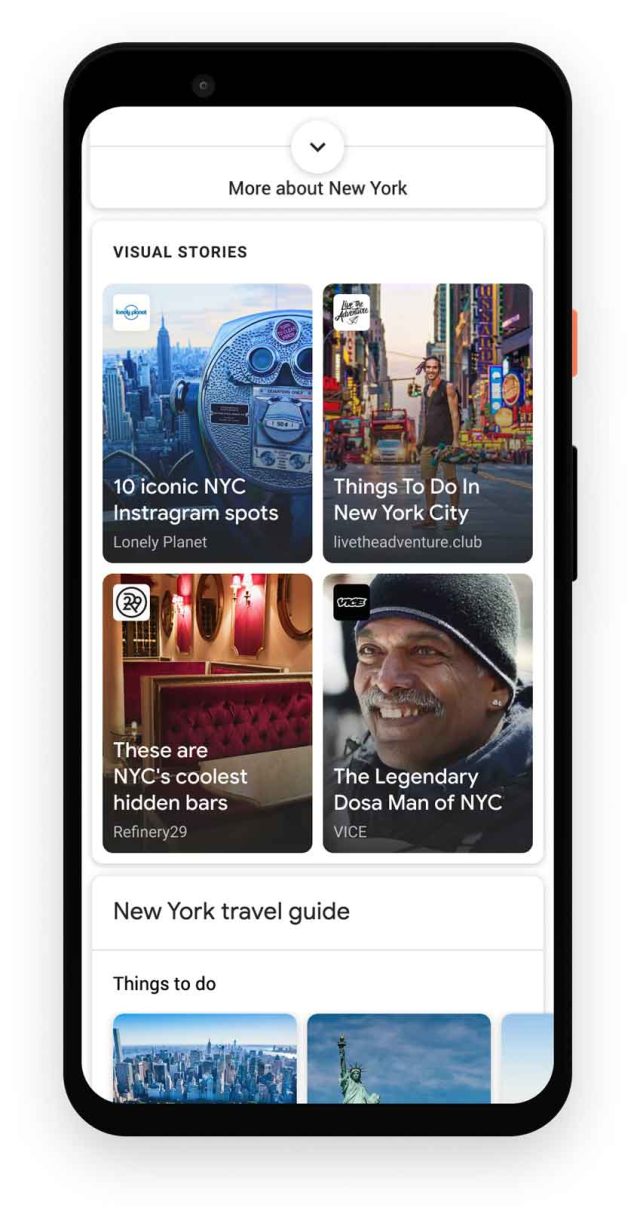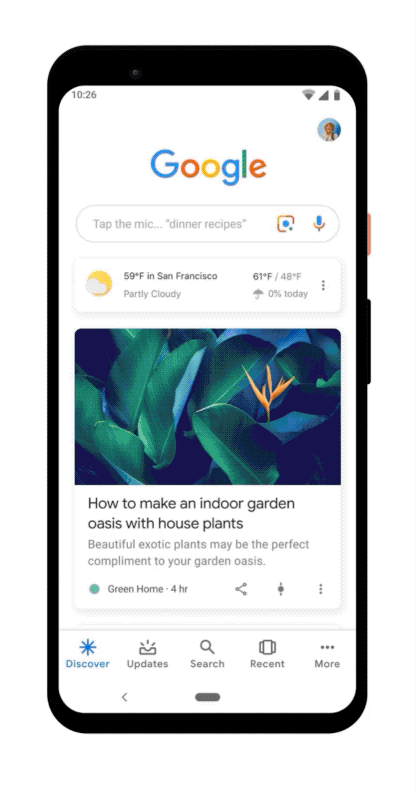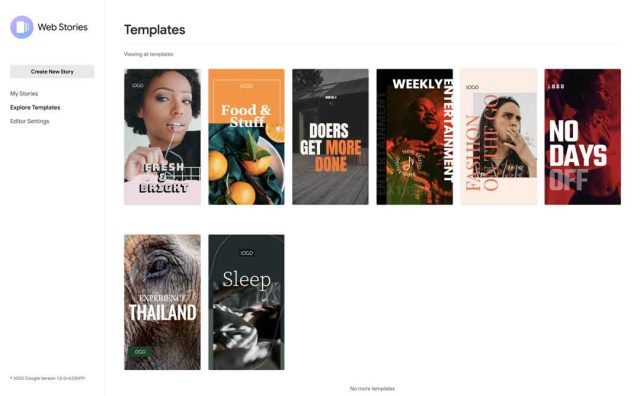Google is on the move with a new Google Web Stories feature that allows businesses to create engaging and interactive stories. This feature has the potential to change how online marketing is done. Today, we will discuss what Google Web Stories are and how you can use them to your advantage.
Google Web Stories: Introduction
Google Web Stories are a new way to tell stories on the web. They are short, tappable stories that anyone can create and can be used for various purposes, such as promoting a product or service, telling a story, or even just sharing information.
Google Web Stories are easy to create and can be published on any website or blog. All you need is a Google account and some basic HTML knowledge. Google Web Stories can be created in any language, perfect for businesses with international audiences.
Google Web Stories have the potential to change how online marketing is done. With Google Web Stories, businesses can create interactive and engaging stories that capture their audience’s attention.
Google Web Stories: Benefits
There are many benefits to using Google Web Stories.
Here’s why you should consider Google Web Stories for your business:
Reach New Audience
You can publish Google Web Stories on any website or blog. It is just a matter of registering for a Google account and some basic knowledge of HTML. Businesses with international audiences will benefit from the ability to create Google Web Stories in any language.
Promote your Product or Service
Google Web Stories can be used to promote a product or service, tell a story, or even share information. If you are looking for a new way to market your business, Google Web Stories is worth considering.
Generate leads
Google Web Stories can be used to generate leads by including a call-to-action in your Google Web Story.
Boost SEO
Google Web Stories can help boost your SEO. Google indexes Google Web Stories, so including keywords in your Google Web Story can help your website rank higher in Google search results.
Monetize your Content
Google Web Stories can be monetized. Google AdSense can be used to display ads in these stories. Google AdSense is a great way to generate revenue from your Google Web Story.
What’s next?
Now that you know all about Google Web Stories, it’s time to see how they appear on Google.
Google Web Stories: Appearance on Google
Google Web Stories can appear on Google across Search, Google Discover, and Google Images.
Google Web Stories: Search
Your Google Web Story can appear in Google search results. When someone searches for a keyword related to your story, your story may appear in the search results.
Google Web Stories: Google Discover
Your Google Web Story can also appear on Google Discover. When someone is scrolling through their Google Discover feed, your story may appear.
Google Web Stories: Google Images
Your Google Web Story can also appear on Google Images. When someone searches for an image related to your story, your story may appear in the search results.
Now that you know all about Google Web Stories, it’s time to start creating your own!
Google Web Stories: How to Create?
Creating Google Web Stories Using Google Plug-In
The easiest way to create Google Web Stories is to use the Google Web Story Builder. The Google Web Story Builder is a free online tool that allows you to create and edit Google Web Stories.
To use the Google Web Story Builder, you need a Google account. Once you have a Google account, you can sign in and create your Google Web Story.
Creating Google Web Stories Manually
If you don’t want to use the Google Web Story Builder, you can create Google Web Stories manually. You need a text editor and basic HTML knowledge to create Google Web Stories manually.
You will need to create a file with a .webstory extension. You can do this using any text editor. Once you have made your .webstory file, you can edit it using HTML.
Creating Google Web Stories Using Third-Party Tools:
Newsroom AI
If you don’t want to use the Google Web Story Builder or create Google Web Stories manually, you can use Newsroom AI’s third-party tool. It is an excellent option for businesses that want to make Google Web Stories quickly and easily.
Newsroom AI offers a lot of different templates to choose from. Grab one to get started. Next, you’re taken to the “create” page, where you can start designing.
Creating Google Web Stories using Newsroom AI is easy and only takes a few minutes.
Make Stories
Make Stories is another great option for businesses that want to create Google Web Stories quickly and easily. Make Stories offers a simple drag-and-drop interface and a catalog of free images, icons, symbols, and more.
Creating Google Web Stories using Make Stories is easy and only takes a few minutes.
Google Web Stories: Components to Focus on
When you’re creating your Google Web Story, there are a few key components to focus on:
The Cover
The cover is the first thing people will see when finding your Google Web Story. Make sure it’s eye-catching and tells people what your story is about.
The Headline
The headline should be short, clear, and to the point. It should tell people what your story is about.
The Story
The story is the most crucial part of your Google Web Story. Make sure it’s interesting, well-written, and engaging.
Save For Later
The save for later enables readers to save your Google Web Story to their Google account so they can read it later—this is a great way to ensure people don’t forget about your story.
The Call to Action
The call to action should be clear and concise. After reading your story, it should tell people what you want them to do.
Google Web Stories: SEO Tips
To make sure your Google Web Story ranks well in Google search, there are a few things you can do:
Add Metadata
Make sure to add metadata to your Google Web Story. Metadata includes the title, author, date published, and tags.
Use Keywords
Use keywords throughout your Google Web Story. Use them in the title, cover, headline, and story. But don’t overdo it – too many keywords will make your Google Web Story look spammy.
Optimize for Google Search
Make sure to optimize your Google Web Story for Google search—this means you need to have a good title, cover, headline, and story. Plus, you need to use keywords throughout your Google Web Story.
Avoid ‘Burned-In’ Text
When creating your Google Web Story, avoid “burned-in” text—this is the text that’s part of the actual image or video. It’s best to add text or captions as a new layer.
Now that you know, you’re all set to start creating your own!
Here are some tips and tricks to help you make the most of Google Web Stories:
Google Web Stories: Tips & Tricks
Here are a few tips and tricks to help you create the perfect Google Web Story:
- Use high-quality images: People are visual creatures, so it’s essential to use high-quality images in your Google Web Story. Make sure the images you use are clear, sharp, and relevant to your story.
- Use short paragraphs: Google Web Stories are meant to be quick and easy to read. To make your story easy to read, use short paragraphs. No one wants to read a wall of text.
- Use strong headlines: Headlines are important. They’re what people will see first, so make sure they’re strong. Use headlines that are short, clear, and to the point.
- Use calls to action: Calls to action are a great way to engage your readers and get them to take action. Use calls to action sparingly, but make sure they’re clear and concise.
Google Web Stories are a great way to engage your audience and get your message across quickly and easily. When creating your Google Web Story, make sure you focus on the cover, the headline, the story, and the call to action. Use high-quality images, short paragraphs, and strong headlines. Don’t forget to use keywords throughout your Google Web Story.
With these tips, you’ll be well on your way to creating a Google Web Story that will engage and delight your readers.













One comment
Amparo Feeney
October 24, 2022 at 4:04 am
Everything you need to know about Google web stories are all in here. I appreciate what you put together here. You’re the man!
Comments are closed.